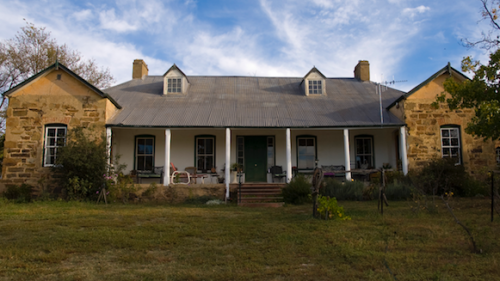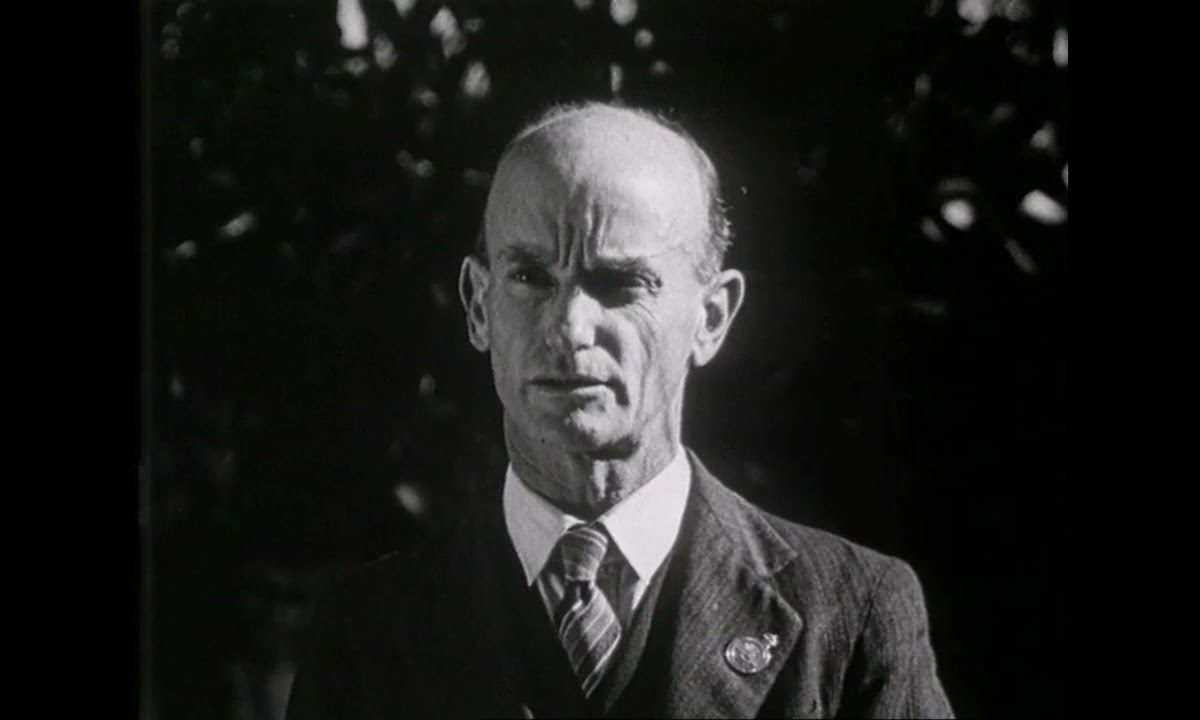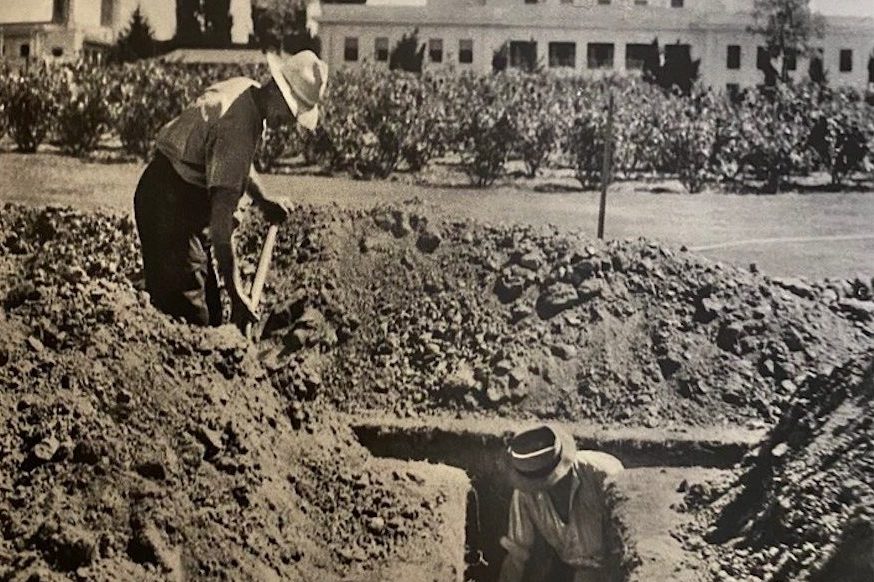
THE skeleton was believed to be 150 years old and since the early 1840s it had lain unknown and undisturbed beneath the homes, businesses and parks that grew above and around it.

When unexpectedly unearthed during a stormwater drain excavation on April 22, 1991, the unidentified remains revealed the lost location of the oldest known communal burial site following the arrival of Europeans in the Queanbeyan-Canberra region from the 1820s.
The Oaks Burial Ground was an otherwise unblessed, undesignated area in today’s Oaks Estate used from around 1838 until the opening of the official Queanbeyan Riverside Cemetery eight years later. The only surviving record detailing its use is dated 1839: “An enclosed piece of ground, adjoining our inn, was the principal burying ground in which, at this time, seven or eight corpses were buried.”
The “inn” was “The Oaks”, one of the earliest substantive constructions on the Limestone Plains and still standing on the banks of the Molonglo River since 1913, on the Canberra side of the railway line signifying the new boundary between Queanbeyan and the Federal Capital Territory.
Built by the merchant Robert Campbell, of Duntroon, at a similar time as the dead began to be interred in its nearby paddock, along with serving as gatekeeper of the first graveyard and being the first pub (the Elmsall Inn), the stone homestead was shortly after occupied by the town’s first doctor, William Hayley.
While it might be a natural conclusion that once they were beyond his help patients were simply turfed out the back door to find their own way to eternity, in truth it would have been a matter of convenience in a primitive setting: “Some person dies and his friends select a place to bury his remains… a coffin was seldom made for the dead.”
Current Oaks Estate residents may sleep easier after learning that another six bodies were similarly excavated a century-and-a-half later – and, interestingly, re-interred in the Gungahlin Cemetery.
Perhaps more disconcerting, there’s thought to be another 37 more in situ, laid together regardless of religious proclivities, all in unmarked graves. Of the total, only two were female, one just two months old. Another is believed to have been the town’s first police constable, Patrick Kinsela.
Killed one moonlit night when thrown from his cart, he joined others who suffered fates including accidents while under the influence (at least five), drownings, and fires. The very last though, placed beneath the ground there almost 20 years after the cemetery had been consecrated, is recorded only as the “Indian Juggler”, the victim of a particularly gruesome murder.
In 1863, a young station hand saw what seemed a solitary figure leaning against a tree in an isolated spot called Sawpit Gully, “two miles and a-half” from Googong, “near Queanbeyan”. On approach, it was an old coat swinging in the wind. Less innocently, further on, a blood-splattered shirt and scattered bones, “gnawed upon by wild dogs”. There was also a damaged human skull.
Ferried to Dr Hayley, it was declared a man, “aged about 40”, and the condition pointed to foul play; the body had suffered a number of wounds, inflicted by a sharp blade or similar instrument. Disturbingly, the fatal blow to the head, penetrating deep into the brain, had been struck while the deceased was still alive.
More than 12 months earlier, a fellow attached to a travelling East-Indian juggling troupe, known for their displays with knives and swords, mysteriously vanished soon after a performance at Queanbeyan’s Harp Inn (Macquoid Street, site of the Leagues Motel today).
Two fellow performers, brothers Cassim and Abdallah Mahomet, were tracked down at Goulburn, billed as stars with Burton’s Circus, and charged with the murder of their compatriot. Evidence presented at the one-day trial that the third “juggler” and the skeleton were one and the same was largely circumstantial but the verdict was guilty, the standard penalty for a capital crime meted out: they were to hang.
While apparently there was motive enough – it seems performance takings had also disappeared – leading Sydney newspapers decried it had not been proven beyond reasonable doubt that the young men were the culprits. They could also barely speak enough English to adequately defend themselves.
In the end, Abdallah, just 20, was spared, his sentence commuted to life behind bars. However Cassim, 27, ascended the gallows of the Goulburn Gaol on May 27, 1863, his end far from rapid, a factor attributed to his “acrobatic profession”.
Consigned to historic perpetuity as only the “Indian Juggler” and considered a “heathen” for his cultural differences, the found skull and bones were interred at the Old Burial Ground, the identity a mystery still.
And on that, there’s an old superstition that says a soul will remain restless while ever its last resting place remains unacknowledged. Could it be then, that Oaks Estate is truly a ghost town?
Who can be trusted?
In a world of spin and confusion, there’s never been a more important time to support independent journalism in Canberra.
If you trust our work online and want to enforce the power of independent voices, I invite you to make a small contribution.
Every dollar of support is invested back into our journalism to help keep citynews.com.au strong and free.
Thank you,
Ian Meikle, editor




Leave a Reply